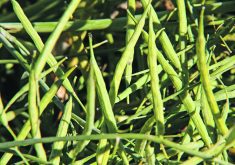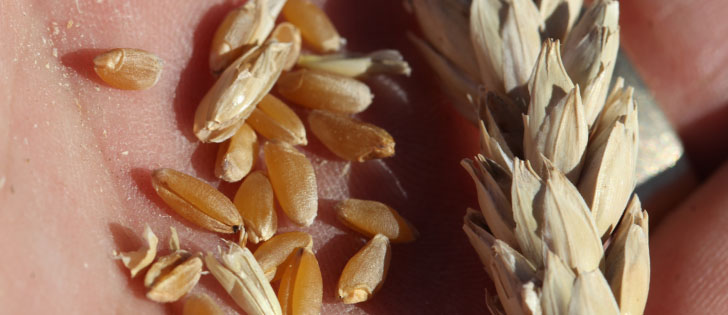The list of failed processing plants in rural Canada is a long one.
What starts with a rush of high hopes and community can-do spirit often ends with regrets, empty buildings and lighter wallets.
The long odds are reason to savour the success of companies such as Mustard Capital Inc., a dry mustard miller born out of many coffee discussions in Gravelbourg, Sask.
MCI, which is owned by 75 local farmers, businesspeople and other residents, has established itself over the last three years as a bona fide player in the international dry mustard trade and is now poised for a major expansion. That’s not bad for a town of 1,100.
Read Also

Canadian farmers need new tools to support on-farm innovation
Farmers need a risk management buffer that actually works and investment that drives advancements forward if Canada is to build resilience.
MCI is a success story, but not a glitzy one.
Gravelbourg, which bills itself as “a touch of Europe on the Prairies,” is a pretty place with historic buildings, including the long-closed College Mathieu. And that’s where you’ll find the ambitiously named Mustard Capital – in the college gym, of all places.
The gym was little more than 3,000 sq. feet of old wiring, inadequate plumbing and non-existent ventilation when MCI moved in and somehow made it into something that passed the Canadian Food Inspection Agency’s rigid safety codes.
It is, admits chief executive officer Tom Halpenny, a different approach but one that other community-owned valued-added start-ups might want to consider.
“We have a ‘grow as we go’ philosophy,” Halpenny says.
“Certainly we had a pretty intense debate about it (building new versus renovating the gym). You always want to be able to see the dollars you’ve invested are doing something. But while it’s nice to have a big new shiny facility, you have to deal with the carrying costs for something that, at the start, won’t be fully utilized. Carrying costs eat into working capital, and if you don’t have enough working capital, well, I think that’s the problem a lot of these sorts of ventures run into.”
It should be noted that the 50 original investors had raised $285,000 during the fundraising period from 2002-04, with Ottawa and local agencies putting in another $226,000.
“They were fortunate in that they were able to raise that amount of risk capital because no one knew whether it would be an investment or a donation,” Halpenny says.
Naturally, the first money was spent on studies, which found that mustard, a major crop in the area, showed better potential than canola, sunflower and flax. There’s a good market for MCI’s two big products: mustard bran (a sauce thickener) and flour (used as an emulsifier, flavouring for products such as salad dressing and as a filler to add texture and protein in sausages and processed meats.)
Still, breaking into a niche isn’t easy, but they caught a lucky break.
North America’s largest mustard processor, G.S. Dunn of Hamilton, Ont., had just filed for bankruptcy and Halpenny, then a project consultant, was able to snag two of its senior people – a miller and sales executive – while the company went through a restructuring process.
So with two veteran industry players with tonnes of experience and Rolodexes full of contacts, it was obviously full steam ahead time. Right?
Nope. Instead, the company began the slow and expensive process of wooing customers. It processed bran and flour samples and sent them, along with detailed technical specifications, to more than 200 companies in 30 countries.
“We’ve probably spent $20,000 just on courier charges in the last two years, sending samples around the world,” Halpenny says.
“There’s no question it’s expensive and requires a lot of patience. And you may not see the fruits of your work for a whole year, or sometimes longer.”
Their patience was eventually rewarded, and with a solid order book and commercial production that is now 4,000 tonnes per year, began operation in 2007.
The new plant, now in the final design stage, will produce 10,000 to 20,000 tonnes a year, a scale that puts it on equal footing with its four big North American competitors.
Now ask yourself this. If you were involved in a community-driven effort to build a value-added processing plant, what would you rather see: a gleaming new plant or a ledger listing six figures worth of pay stubs, courier charges and other marketing costs?
Intellectually, spending that hard-earned investment money on market development makes sense. But emotionally, wouldn’t you like to have something you can see and touch?
“There’s no question there was lots of anxiety and a real desire to get going,” Halpenny says of MCI’s early years.
Sometime next year, a ribbon cutting ceremony will be held in Gravelbourg, eight long years after MCI was first conceived. The new plant has been a long time coming, but chances are it will be around a long time, too.














